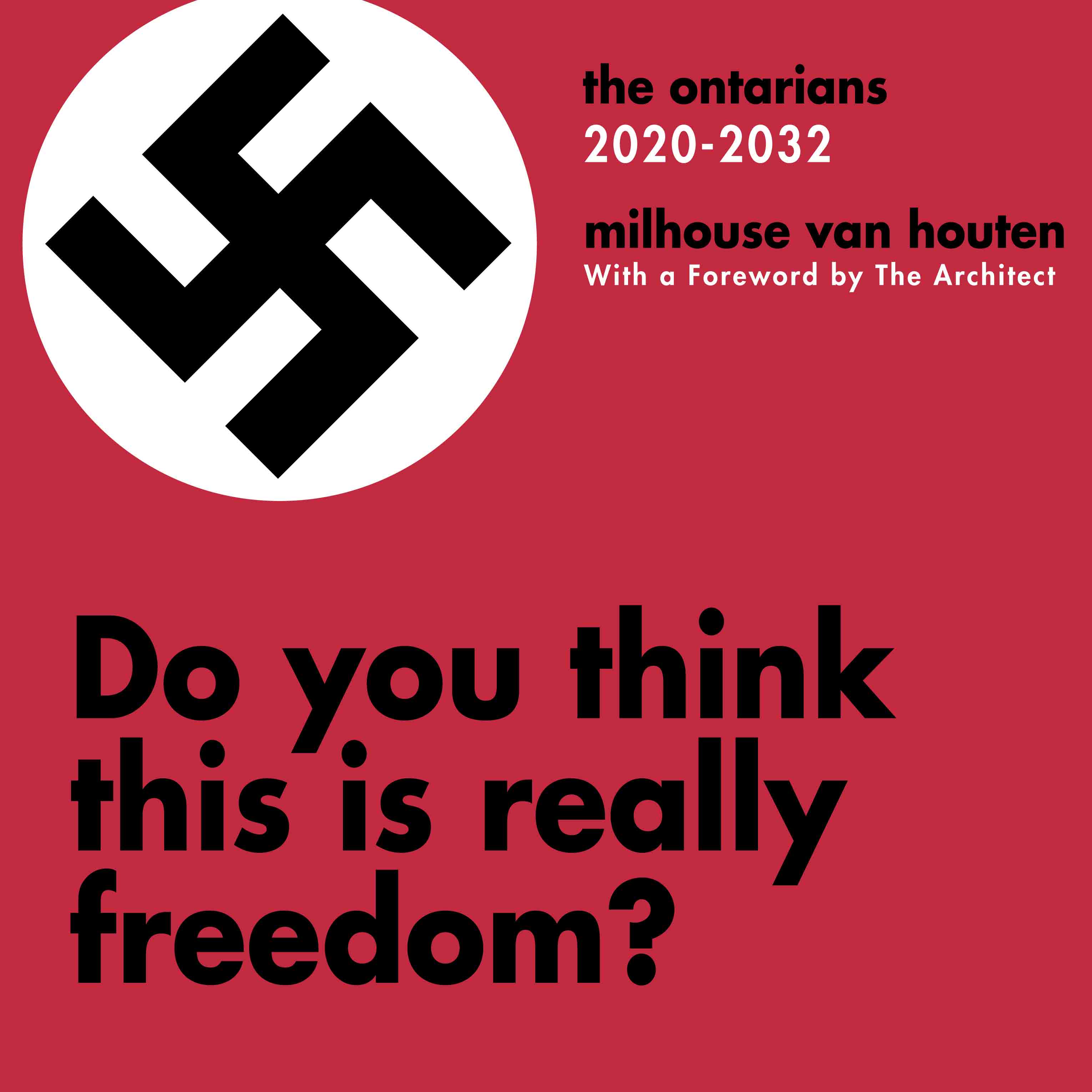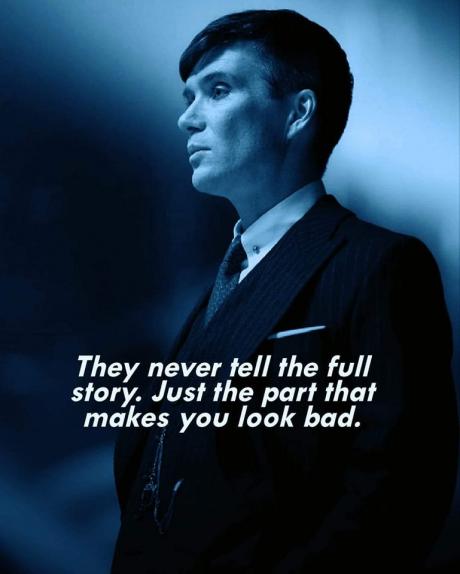There have been lots of controversial non-pharmaceutical interventions (NPIs) in the pandemic. And most of us have gone along with most of them — I’d hazard a guess that a lot of the readers of this blog were, and are, pretty respectful of the various authority-driven pronouncements and restrictions on personal freedom during the course of this pandemic.
Certainly I was. At the very beginning, when I received a request from a friend on a reopening committee, I immediately went to work (this was back in March, 2020) to see if there was any way to contain COVID-19. And like many of us, that road led me to masks. It looked like various countries that had strong mask-wearing mandates had successfully managed to dodge the pandemic. And so I wrote this piece — “How We Know Masks Work.” It is still up on my blog, as I have a policy to leave up the things I’m wrong about, as well as the subjects I nail.
It’s actually still pretty good — but we’re far along the evidence pipeline now, and much stronger evidence is now out there that clearly shows how masks DON’T work. I really recommend everything on Ian’s Substack. It’s super-readable, and he really nails the population-based time series case. And he’s really funny. He also links back to “the Science” (the good, the bad, and the ugly) if you need to read that as well.
The short version of how we know that masks don’t work is we have case/hospitalizations/deaths time-dependent plots from almost every country on the globe. If you look at when in time the various mask mandates have been implemented, you’ll see that none made any difference all in any of the measurable quantities. NONE.
Here’s the short version from a systems dynamics perspective. When you implement a policy, there should be at least a modest change in the dynamics of the system, downstream in time from where you implemented the policy. What that means is that if you implement masks, then you should see some reduction in cases, etc. This is called a “step response” and it’s what we cover in junior-level system dynamics class in engineering. It is true for ALL physical phenomena, and it is EASILY observable. You add an intervention, something happens downstream. And don’t start in with that ridiculous rant about “you’re not an epidemiologist.”
If you don’t see a change, then the input (in this case, the mask mandate) didn’t make a difference. It really is that simple.
I don’t want to belabor this with the various arguments, so I’m posting one of the plots from Ian’s Substack, because folks will inevitably say things like “well, they put in the mandate, but no one followed the rules.” Or “maybe there was an effect and it changed the population dynamics.” And so on. Before we move on to what this post is really about (the social dynamics of the persistence of masks, or rather why authorities want us to use them, which is really weird and strange) I’ll just say ALL OF THAT IS ALSO BULLSHIT. I have pored over this for the past year, attempting to find some version of a rational argument, with data, that really supports this, and it basically doesn’t exist. The fact that people have put masks on hamsters, or built weird devices to blow air through masks, is largely meaningless. You can stop the virus by putting a plastic bag over your head. That would definitely work. But needless to say, there will be relatively immediate downstream consequences.
The various protected island populations (Taiwan, S. Korea, etc.) have now all gotten COVID big-time, they are losing their shit over it (my wife is Taiwanese so I get to watch this firsthand in the home country.) They are running around (at least in Taiwan) in Hazmat suits, and it is making no difference. No NPI is really making a big difference in the time-dependent numbers. Though indeed, when everyone locks themselves in their apartments, they might (might!) make a difference in the various peaks. For a week or so. There is simply no way to tell, because there is enough variation in the populations affected you cannot run what is called a Randomized Controlled Trial, where you have a nation where you introduce the virus, and one where you don’t, and do a comparison. You can’t do it because societies are open systems (a whole ‘other graduate class there) and you have to find other ways of knowing. What’s tragic is that when you build fear to the level that they have in this idolized, homogeneous societies like Taiwan, is that since everyone thinks the same, and everyone believes the virus is a death sentence, you have people allowing themselves to literally be burned alive in order to avoid exposure or spread. Anyone who lives in a Western democracy and advocates for this level of societal control — I honestly don’t know what to tell you. It IS more complicated than black-and-white thinking allows (Taiwan, for example, has some very innovative democratic mechanisms) but it is still a relatively unevolved society in certain measures. And even get me started on China.
And for those post-modernists (read the photo on the link — you’re never gonna be happy!) or those with a bad case of Dunning-Kruger, look — check out my resume’. I kinda feel like I have some street cred for writing about masks and earlier getting it wrong.
Masks don’t work, and like hell they don’t obstruct one’s breathing. In order to believe this, you really have to be under total mind control. And when it comes to empathy — you’d do this to kids? With the level of evidence, as well as the preventative case, out there? Are you for real?
So here’s the South Korea curve from Ian. Thank you again, Ian, for doing this.
From Unmasked
So let’s leave that surface-level question of whether masks work. They don’t. That’s not what this piece is about anyway.
It’s about “Why are people so fixated on masks, as well as forcing others to use them?” In order to understand that, I’m going to introduce a few concepts.
First is this. You think you are in control of your own thoughts. But you’re not, completely. You are part of a social organization, or a number of social organizations that have rules of engagement as far as how you relate to people. These rules (or really meta-values – we’ll come back to this) dictate whom, and how, you’ll talk and relate to others. There are bunch of these rules that are packed in our heads. They actually fall out trans-culturally (this is extremely challenging for academics to accept) and they are knitted into our heads across humanity. These rules enable different societies to coordinate activities among individuals inside that society.
And while they are FAR from the same, they do fall out into well-established groups of social structures. These social structures are all motivated by one uniting meta-goal. And what is that? It’s persistence. At some level, for some time, you want to wake up in the same society you left when you went to bed at night.
This feature is called homeostasis. All living things tend toward it. Here’s the wild thing. Just like the cells in your body tend toward a physical homeostasis, you, as an individual inside a larger social network topology, also seek this.
Every single one of us has a variety of social systems that we traverse. And every one of those social systems burns these relational patterns into our brains, in what is called a canonical stack. This canonical stack creates the knowledge in given structures. This leads to a unifying, guiding principle — As we relate, so we think.
As we move up through the different social structures, and their linked knowledge structures, we develop strategies for how we fit in — or really, how we will help a given social structure achieve homeostasis. The level of variability and complexity in that homeostasis is directly related to how evolved the given social structure is.
Let’s take in a brief example — supporting your football team when you go to the stadium. If you’re in the early 21st century, you’re likely going to wear a football jersey of your favorite player. You may have a set of cheers you do when your team makes a first down. You may have a long, mythic history associated with your loyalty for the team (“I believed in the Cleveland Browns when no one else did!”) and so on. I’m not the first to note that there is a tribal identity with something like football. And if you don’t? You sit there while everyone else cheers for the home team? In this modern age, the worst is you’ll have a bad time and people will look at you funny. Scale it back 500 years, and the outcome might have been a bit more grisly.
As you move up in social evolution, different identities emerge with the different social structures. And the one you spend the most time with often creates the rules that are your unconscious “Go To’s” for means of processing information. If you’re in a legalistic hierarchy, for example, you’re used to following the rules. If you’re in an authority-driven hierarchy, you’re likely waiting for someone to tell you what to do — or think.
This natural predilection sits in a part of your brain called the Default Mode Network. It’s the background processor that basically runs the relational patterns on the knowledge you acquire and helps you make sense of your situation. Your default pattern that you’ll unconsciously reach for is a function of your aggregated values, otherwise known as your value Meme (v-Meme — those meta-values I alluded to earlier). For me, I’m naturally very goal-focused. You bring me a problem, I’ll immediately start composing some heuristic to get us to whatever that shared goal is. (Might be sexist to say this, but it drives girlfriends and wives crazy!) Maybe you’re a rule-follower. Maybe you’re a community well-being maximizer. All these modes are represented in the v-Meme set described here.
Now here’s the thing — and it’s a hard one to really grok. A given action (like wearing a mask) DOES NOT IMPLICITLY and definitively reside in any given v-Meme. You can’t look at someone wearing a mask and immediately know what their v-Meme is. But in aggregate, in a larger social system, they DO tell you something.
Finally, we tie this to empathy. The KEY element to evolutionary social systems is the characteristic of the full stack of empathy. Empathy is NOT just giving folks a hug, or telling someone you’re sorry. Empathy has little to do with accepting someone telling you a story — bullshit or not — though this is often how the notion of empathy is weaponized. “You’re not empathetic because you don’t care if grandma dies…” This is a manipulation. Empathy is really about how you connect with others. HOW. Mirroring? Emotions? Reason? Information taken from their person? Projection of their circumstance? All these govern the empathetic response, that is given in a triangle. And here is a never-discussed fact — that level of empathy dictates the level of information coherence inside your social network. The more empathy, the greater the coherence. Here you go:
The good old Empathy Pyramid, modified from work by Frans de Waal
These things are all tied together — social structure, knowledge structure, individual development, our operation of our default mode network, and our v-Meme set that maintains homeostasis inside that social structure. They are all connected, and integral to each other.
They are ALL tied together, in feedback loops with each other.
And while any given action may not uniquely map to a given v-Meme, let’s just say that certain ones turn up over and over.
And some, in the context of modern society, like masks, are a hack.
I’ll repeat that — masks are a hack, in the most literal, computer-sciency sense of the word. They’re meant to get inside that higher-level homeostasis of individual rights, and care of community, that higher v-Meme, and BRING IT DOWN.
And they’re not just any hack. Any modality that fundamentally attacks empathetic function (you cover your face, people cannot read your intent) is what I call a Deep OS hack. It’s hack inside The Matrix — how various social structures relay information around their various networks. Interestingly enough, it helps low empathy social structures (like authoritarianism) while dismantling other social structures that promote individual choice or larger well-being. Here’s a plot of Don Beck’s evolutionary social structures to give you a feel for generalized societal evolution.
So much genius in this little picture.
My work has made the case that the empathy dynamic is the key thread running through societal evolution — by the time you’re up in Green, you’re identifying individuals and their unique needs. In order to do that, you have to be able to look at a person, and read them. And needless to say, when you wrap their face in a mask you’re aggregating them into a homogeneous group. Move that needle down to Red Mode!
So now we have to talk about how at least a couple of these social structures work — in particular, the old Authoritarian Power Structure one. In order for Authority to work, the person at the top has to be right, and you (you!) have to be wrong. That means that regardless of what information you are taking in, you have to disregard it and believe whatever you are told. What I call ‘validity grounding’ — the process of confirming what you’re told, with what your eyes see, or your cognitive process tells you, you have to suspend. It’s not a bug of a stable Authoritarian system. It’s a FEATURE.
Here’s the interesting thing. For some folks, wearing a mask will make them feel safe (regardless if it physically works or not.) That’s a response from down lower on the social organization chart (look to the left.) Maybe a mask “just feels right” for some folks (that would be instinct-driven.) But mostly, masks homogenize and make folks feel depressed. They can’t have a higher level of emotional affect. They can’t recognize individuals. They obviously can’t understand sarcasm, or irony, or all those other human communication signals that are so important for conveying nuance. Or really, independently generated affinity and love.
The overall effect of any Authoritarian system is to create depression among those that are receiving conflicting information streams, and the True Believers that basically have an Old, Angry God installed in their heads that supports whatever the Authority is saying. Low energetics are mandatory — or else folks might speak up and against the Authority, disrupting the natural homeostasis of the system.
Here’s the truly terrible thing. We’ve set up most of our scientific and academic organizations on Authority-Driven and Legalistic social structures. What that means is that when it comes to knowledge structures, they are primarily belief-based. And that means the people in them, whom we’re counting on being rational, aren’t really rational at all. Their relational practice is based on titles — not reading the room. And so that spills over into how they think. That’s the whole Default Mode Network thing. You can see how that might be a bit problematic in a global pandemic. Right when you need multiple avenues of explanation, that really get to the heart of the problem, what you get instead is profound GroupThink.
And now here’s the real kicker. Most of this is unconscious. MOST. The elite consensus on masks was established early on during this pandemic. And it’s no surprise that masks, which kill empathy, and are a single point, small temporal and spatial scale solution (you wrap that sucker around your face, after all) would take off, in a noisy environment where you’re taught to judge your neighbor (more low empathy, in-group/out-group sorting) if they weren’t wearing one. “Just wear your damn mask!” has been the battle cry forever. And it so conveniently divided up into Left/Right politics. And what a way to constrain responsibility. All you had to do was agree to slow-scale suffocation of you and your loved ones, and hey — you’re off the hook!
Now let’s stop and consider that a good hunk of people on the Left are going to be rule-followers (“Wear your damn mask!”) and on the Right (“I’ll do what I want!”) you can see how we got there. And because it was fundamentally dichotomous in knowledge processing (Do/Not wear a mask!) the memetics easily went viral. Simple things go far. More complex, nuanced thoughts do not (don’t even ask me about the vitality of my blog!)
And so masks — the ultimate low empathy hack — came to the fore for what they actually did best — a tool of relational disruption. It certainly wasn’t stopping COVID. You can’t go to church without one. You can’t let your kids go to school without them on. You can’t go into a restaurant without one on, until, of course, you sit down at a table and immediately take one off. And on and on. What an easily identifiable badge of In-group/Out-group low empathy conformance. Masks turned into a memetic virus — far more effective than in the physical world against actual viruses.
Naturally, they favored the memetics of the relationally disordered. If you have OCD, masks are a lifesaver. People are a big old vector of disease, and finally, society as a whole recognizes your pain. I’m being facetious here of course. But we’re going to have to start understanding how all these things work or we’re never going to get out of this.
Little kids masking? No question that little kids are going through emotional growth phases where reading faces, if we want them to be whole, and have appropriate attachments (and here’s the kicker) THAT THEY FORM THEMSELVES. If you live in a country where you’re forced to veil your face, this is no big deal. Note that these are countries that also still have arranged marriages (which is a big can of worms that of course has pros and cons.) Because your ability to develop relationships is severely affected. What’s also fascinating is that kids are passing through a phase of growth in rule-following at the same time, and many children, if you tell them to wear a mask, will scrupulously adhere to it. But it will have developmental effects — especially as we’ve now chosen in some states to carry all this crazy bullshit out over years.
These types of hacks are all emblematic strategies and tactics in what is really a MEMETIC WAR – a war of information structure conservation between social systems. What one tactic/hack, like wearing masks does for one social system (if you’re attempting to identify people individually, or form independent relationships, well good luck with that!) is very different for another. Wearing masks, for example, profoundly disrupts the homeostasis of higher v-Meme systems. Those systems require nuance, and distributed processing in order to persist. They REQUIRE empathy. But that’s where masks as a weapon of rigid hierarchies come in — through disrupting this transfer of information, in aggregate, mask-wearing profoundly supports lower v-Meme systems. And people will quite literally go to war to support their homeostatic social system. (Here’s how that works.)
Do the people inside a given system really know what they’re doing? I have no doubt that THE MAJORITY DOESN’T HAVE A CLUE. They’re in the Matrix, after all, and things just are the way they are. Achieving a higher consciousness, Enlightenment, self-awareness, whatever you want to call it, has been dwelt upon by all sorts of philosophers down through the ages. By any faith/system of belief standards, it’s a TON of work, most folks never get there, and most folks aren’t even aware that they’ll never get there. That’s because we process the Matrix at the level of development that we’re at. And looking above our heads is something that we were never very good at, but Postmodern philosophy has now demonized. You are in The Matrix. Even if you don’t realize it. Or the Truman Show. Pick your metaphor. The point is that the behavior is emergent. It’s what you do to get along. Whether you realize it or not.
Does it mean that the various scientists who are doing things like advocating for masks have no clue to their motivations? I also don’t believe that they’re unaware of the surface-level system dynamics for a red second. They may not know they’re in the Matrix. But most know there is considerable career risk for speaking out against the status quo, and the act of speaking out upsets that rigid hierarchical apple cart. Trust me — if you intend to move up in academia, you don’t even write pieces like this one, which I consider a.) to be obvious, and b.) to be relatively innocuous.
And some of the proponents, like Dr. Anthony Fauci, (dude is 81, and relatively sharp!) are very likely experiencing what I call the Nazi High Command problem — they’re in it so deep, they think if they backpedal, they’ll be up against the wall. I’d argue that this would require at least a little self-awareness. So it’s unclear how many of them are actually thinking like this.
But that’s not the only modality for the Fauci’s of the world. You can be sure that there’s also a narcissistic God Complex problem going on. They’re not just worried about their current status. They’re also likely worried about a profound loss of authority, which perhaps they view as necessary for societal good. If they reverse themselves (though it could be argued that Fauci has already reversed himself a couple of times) then they will lose their authority and then the population won’t listen to them the next time. And The Matrix is very clear about what happens to those that disobey GroupThink. Scott Atlas, who has actually been pretty rational in all this, first was attacked, and now shunned. Deborah Birx offered herself up for sacrifice. These are not inconsequential actions. You can bet your hard-earned money that all of these folks can read a time series, and know they should see some change in system performance for any NPI they apply. Yet they are caught up in The Matrix, as we all are, at some level. And ended up with the consequences that the dominant social structure in organizations like the CDC dole out to dissenters. Even if they’re at the top of the organization. If you want the sun to come up, some poor bastard has to get their heart cut out on the pyramid.
As a nation, we were ripe for this kind of nonsense. We have neglected developing our people, as well as our kids basically forever. Once you’re down there with your homeostatic thermostat stuck in Authority-land, which implies low- to no-reality-based grounding, anything goes. If you want people to not fall for Authority, you have to raise them with agency, as well as appropriate empathy. Nope — we didn’t have it coming. But entropy has a way of creeping up on you, and having the bill come due. Our societies have long been set up for the hack. How the hell did Donald Trump become President anyway?
Here’s the thing. Culture will keep you going for a while. Culture consists of sidebars, many of which can be economic. But culture won’t save you if your social structure is broken. And that gets back to the basic dynamics of relationships in a given nation. Culture can preserve old things, but has a nasty time creating new economies — that’s what social structure does. (I do write about this quite a bit.)
And the fact that this has now crept down to school-age kids? No surprise there either. We’ve neglected child welfare in this country forever. The fact we threw them on the sacrifice fire early was also no surprise. That’s what our national Default Mode Network, endlessly stuck in oscillating dichotomy, had in store for us. Status-based thinking. And like it or not, kids are low status.
This kind of low level of empathy development also makes us vulnerable in other ways. As a society plagued with overwork forever — I’ve toured the world many times, and no one works like Americans — the aggregate level of exhaustion leaves us in a Survival v-Meme meaning crisis. Now the very act of wrapping one’s face in cloth is how we define helping others — an ineffective NPI that demonstrably does nothing unless you’re coughing. And that lowers the bar on other arbitrary things that fix no real problems. There is more here in maintaining the social homeostasis of an Authoritarian society, which inherently has a bottom caste, than meets the eye. And one of these, unfortunately, is believing that magical rituals matter, as opposed to removing real human suffering of those huddled masses. That’s the real peril of empathy collapse.
IWhy fight this fight? I’m addressing the U.S. now, though I think that most other countries are really not that far away from us. This chronic level of gaslighting upsets the meta-thinking apple cart on lots of other issues. “If they believe this, then let’s try this!” It’s important to keep things real, or you basically open yourself to more Magical levels of societal development. Like it or not, the informatics will find its level. It’s emergent, after all.
And untethering from the belief that you have an obligation to a little of physical reality (not everything is easy here, so it’s important to temper a bit) is a recipe for societal collapse. Here is the key thought — how we practice thinking is how we WILL think in the future — and the key way we practice thinking is how we practice relational dynamics. Believe this however you need to believe this — with Gladwell’s 10K hours mantra (just so you know, it’s more complicated than this) but this simple concept of how we practice thinking is how we will think should rally you to take action against the gaslighting.
In times like this, I reach back to even worse times and find inspiration. One of my heroes who survived the Nazi concentration camps, Viktor Frankl, said basically you can make it through anything with one person you grounds you. Our situation is far away from what he endured — don’t go all Godwin’s Law on this current situation. But if you want to give light, expect to endure some burning. We have to speak out. Now. And with school kids, don’t tell me it’s not local and you can’t make a difference. Because you can. You’re in the Matrix. I just explained it to you. Now go get your Neo on.










Comments